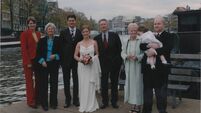Woman died as heart machine failed
Anne Scattergood, 77, of Seagrange Road, Baldoyle, Dublin 13, was being brought by ambulance from Beaumont Hospital to the Mater Hospital on July 21, 2009, when an intra aortic balloon pump machine, which was assisting her blood pressure, stopped working.
Her condition deteriorated and she was rushed to the Mater as an emergency transfer, where she was pronounced dead 45 minutes after arrival.
Her death was due to complications of a heart attack.
The machine stopped working due to a defective battery and there was no facility in the standard ambulance to plug the balloon pump machine into an external power supply.
Only three specialist ambulances have such a facility and it does not exist on standard ambulances, which have a 12-volt supply, an inquest at heard yesterday.
Forensic engineer Joseph O’Neill, who examined the heart machine, told the inquest it was “desirable” to have a back-up power supply in the ambulance.
He described this incident of battery failure as an “extremely unlikely scenario”, but recommended that staff seek such a power supply in order to make sure there is enough reserve for all eventualities where a battery could run out.
Mr O’Neill also added it “would be more appropriate” that equipment could work off 12 volts.
Technical service manager for Marquet, the balloon pump manufacturer, Gerry O’Brien, said the company recommends that a secondary power source is always available.
Coroner Dr Brian Farrell said he would draw the issue of external power supplies in ambulances to the attention of the National Ambulance Authority.
The battery will be returned to the manufacturer, at the request of the coroner, for tests to establish the precise nature of the malfunction.
The coroner said the failure of the intra aortic balloon pump was a “co-morbidity” or factor in the death of Ms Scattergood, but that it may not have altered the outcome.
Ms Scattergood was critically ill, had suffered a serious heart attack over 24 hours earlier and was due for assessment as to her suitability for heart surgery at the Mater.
The device had a battery life of two-and-a-half hours, but a warning, which alerts the users that there is only 30 minutes of power left, was issued just a few minutes into the transfer. It then stopped working.
The battery, which had been fully charged prior to the transfer, was only six months old and had used just 10% of its power.
The coroner recorded a narrative verdict, a summary of the facts of the case. He said a verdict of death by natural causes would “not do full justice to what had happened”.












